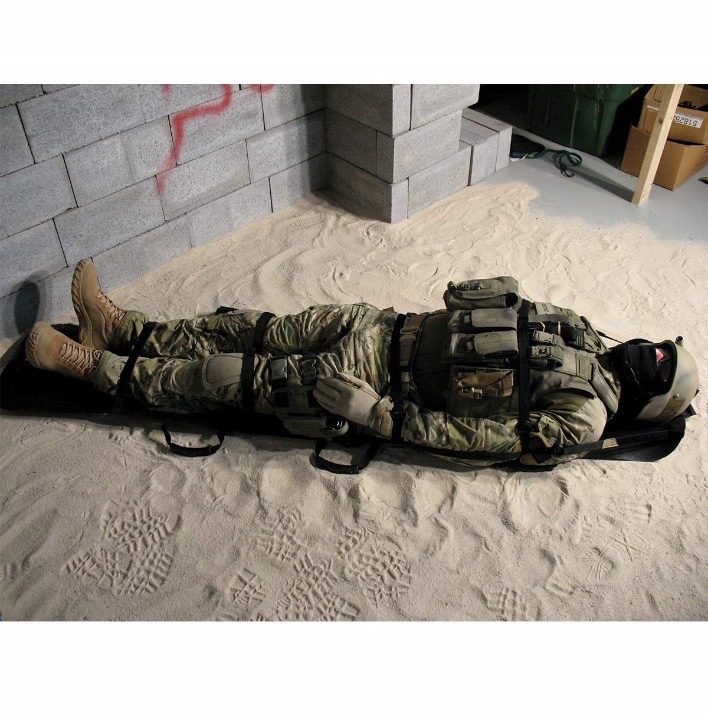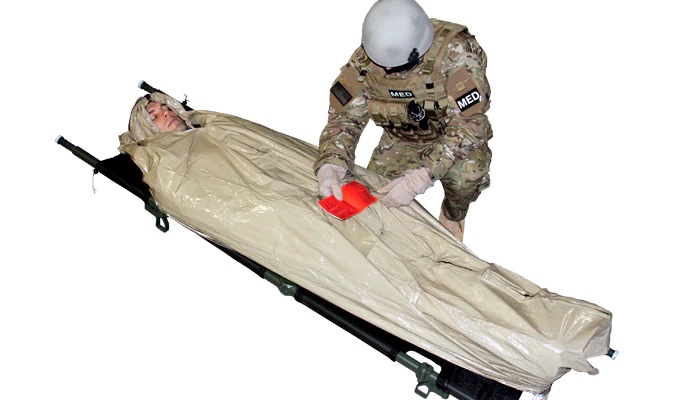Casualty movement can be a complex task which METT-TC (Mission, Enemy, Terrain and Weather, Troops and Support Available, Time Available, and Civil Considerations) will play a critical role in selecting the most appropriate assets to be employed to physically move casualties in the battlespace or area of operations. With every phase of casualty movement, new challenges are faced and leveraging the best material solutions for the end user can be a decision that is complicated based on the mission’s limitations for weight, cube, and level of training of the end user.
A factor that remains true with regards to casualty movement, as with most tactical equipment, is an increase in capability almost always comes with an increase in cube, weight, and total cost. The end goal of all casualty movement is to provide the casualty a movement platform that is rigid, supports the entire body, and transported with minimal effort while maintaining the ability to monitor and treat the casualty. Let’s take a look at the different options in the context of the Phases of Care for Tactical Combat Casualty Care.

Care Under Fire
In the care under fire (CUF) phase, the quickest and easiest way to move a casualty is by a simple drag or carry. While quick and effective, they each have their limitations. Drags and carries are often best suited for short distance movement to the first available cover as they require a lot of physical effort and will temporarily reduce effective fighting strength while attempting to gain fire superiority. While manual carries can be utilized for longer movements, variations of dragging a casualty without some form of material solution can only be executed for short distances. Casualty drags are often practiced in areas that are smooth and conducive to the task, but in reality, this is rarely the case. Patients can actually be injured further from being dragged long distances, primarily by friction which can quickly abrade through uniforms and equipment. If manual carries are the method of choice for moving in this phase, they must be practiced by all team members on a regular basis for smooth execution.
Occasionally in the care under fire phase, simple poleless litters are employed. Poleless litters come in various shapes, sizes, and materials. Two options for poleless litters are the Ultralight Poleless Litter and the Phantom® Litter. While a poleless litter can fold smaller and is lighter than a traditional rigid litter, they also have limitations. They can be dragged for short periods of time but will eventually wear through the material from friction. Additionally, they require people to carry them in order to transport the patient in a proper position (more people = better position). Most commonly, observed is the patient will be bent at the waist unless six or more people are assigned to carry the patient.
Tactical Field Care
Once the situation is more permissive, better options become available due to time constraints, reduction of threat, and better availability of equipment. This phase includes the transition from where the casualty was injured with movement to either a Casualty Collection Point for further treatment or preparation for loading into an evacuation platform. This is the phase of care where the movement platform is considered relative to both injuries and treatments as well as the platform they will be moved to for evacuation.
Occasionally during this phase semi rigid litters will be employed like the Foxtrot® Litter or Foxtrot® DA Litter. Semi-rigid litters are often smaller than lighter than traditional rigid litters, but with reduction in weight and cube comes correlating reduction in capability. Most products in this category act similar to poleless litters with the added benefit of reduced friction, making them more suitable for dragging longer distances or across varying surfaces. While they are semi-rigid, most will lose their rigidity if carried by only 2 people.

More robust versions of a semi-rigid, litter like the Med Sled VLR, increase in cube and weight but have the added benefit of being vertically or horizontally hoisted in a variety of tactical situations. Most of these more robust products will still leave the patient in contact with the ground so insulation and active heating from a hypothermia solution, such as the HELIOS® System, is important. In hoisting operations, most often the evacuation platforms crew will dictate or provide the device. While semirigid litters are common, a Stokes basket style device is considered the gold standard. Unfortunately, they are not easily carried and require training not commonly found by ground personnel.
During this phase, rigid litters may become available as well. While considered the gold standard of movement for all casualties they are primarily limited in the earlier phases of care due to weight and cube considerations. However, rigid litters offer the benefit of being carried by 2 or 4 team members, optimal patient positioning, and better hypothermia management by reducing contact with the ground. Most dedicated evacuation platforms are also configured to receive and secure most of the commercially available rigid litters due to NATO standardized footprints after years of combined, joint combat operations.
To learn more about casualty evacuation and movement, check out: tacmedsolutions.com/collections/medical-supplies/immobilization-&-evac

